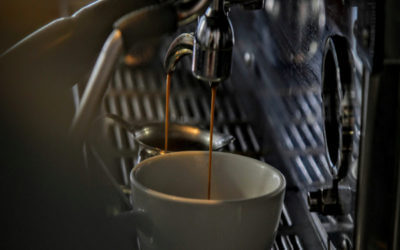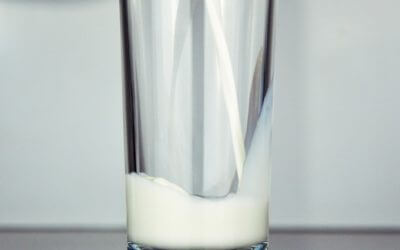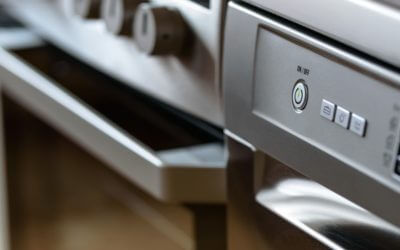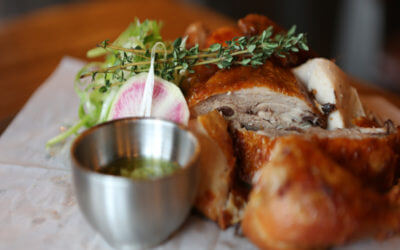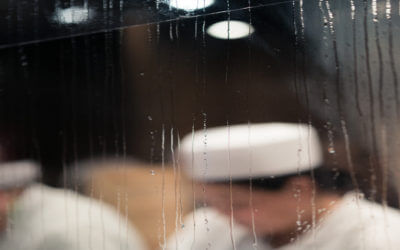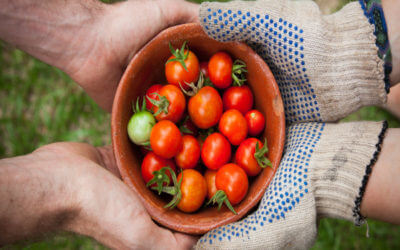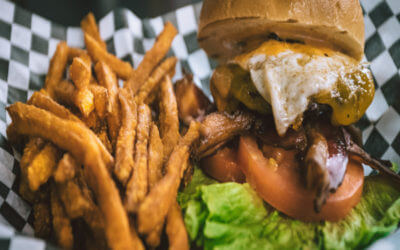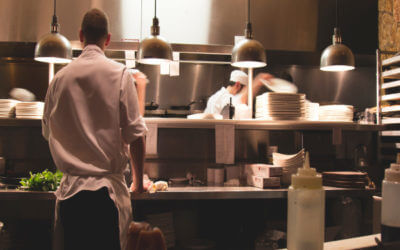Outside the Commercial Kitchen: Food Safety While Catering
July 7, 2018Many restaurants and other eating establishments like to provide catering for special events. Catering a huge business, worth over $53 billion per year.
Catering allows your restaurant to reach customers who might never set foot in your establishment otherwise. It’s incredible marketing, and rather than spending money, you’re making money!
However, if you want to make a great impression, you need to keep food safe. This requires some special equipment because you’re not in your normal commercial kitchen. Here are the steps to take.
Avoid Cross Contamination During Prep
You may be prepping onsite, or you may be creating the food in your own commercial kitchen and then bringing it to the event. Regardless, it’s vital to keep food separate and surfaces clean during the prep and cooking.
Use different cutting boards for different foods, disinfect and wash regularly, and ensure everyone washes their hands. Keeping food safe during preparation is the first line of defense for keeping guests safe!
Prepare for Careful Transportation
Keeping hot foods hot and cold foods cold can be most challenging during transport. Hopefully both your commercial kitchen and the catering location has heating and cooling equipment, but the vehicle on the way may not.
If you don’t have commercial coolers to bring in a van or vehicle, make sure to pack cold food carefully with ice or frozen cold packs. Hot foot can be insulated so that it doesn’t lose heat.
Be sure you take into account the temperature outside. On very hot days, cold food needs more attention, and vice versa. However, never assume that the outside temperature will keep a particular type of food safe. You need 145 degrees for hot food and 40 degrees or less for cold.
Have Proper Equipment at the Catering Site
Once you’re on site, be sure you have the equipment you need. That includes chafing dishes, ice, and onsite refrigeration. You want to make sure that you know how much food is needed, so that only a specific amount of food is out at a time.
Of course, if there isn’t on-site refrigeration or heating, you have a bigger challenge. Being outdoors is even harder. If you face these additional challenges, be sure to scout the site beforehand. Find out if you can bring portable equipment from your commercial kitchen and perhaps plug it in. Many park gazebos have at least one outlet.
Use Well-Trained Staff When Outside the Commercial Kitchen!
When you provide catering, bring your best – both in food and in staff! Your employees should be well trained in both hospitality and food safety.
Food temps should be measured regularly, and anything outside the safety zone should be removed promptly. At the same time, your employees should be excellent at customer service and soothing frazzled nerves.
You never know what’s going to happen. When your staff is ready for every eventuality with poise and a smile, the catering event will be an incredible promotion for your business.
Do you need kitchen equipment for your commercial kitchen or catering operation? We’d love to help. Contact us for a quote today!
5 Things Every Restaurant Owner Should Do Before Buying Used Kitchen Equipment
Equipping your restaurant properly can cost a lot of money, so buying used kitchen equipment is the go-to choice for many restaurateurs. Buying used kitchen equipment for a restaurant is a bit different than buying used equipment for your home, however. You will...
Top Restaurant Technology Trends in 2018
When looking to buy restaurant supplies, you want to be on the leading edge of technology trends. This will keep your kitchen running smoothly. Let’s take a look at some of the most recent trends in restaurant supplies technology. 1. New Payment Options Who would...
5 Different Ice Shapes and Why You Should Care About Them
Ice makers are very popular in the restaurant and foodservice community because they eliminate the need to buy ice every day. And of course, adding an ice maker to your collection of foodservice equipment means you will always have ice on hand when you need it. An...
Pulping and Grinding: A Starter’s Guide to Reducing Commercial Food Waste Costs
For most restaurant owners and managers, the expenses involved in making meals are always under careful consideration. Water is needed to prepare, cook and wash food; power is necessary for food prep, cooking and cooling, and so on. However, how many of us consider...
Choosing the Right Milk Cooler: Cold Wall or Forced Air?
In a restaurant, milk is an essential to have on hand for coffee and other café-style beverages, for serving with kids’ meals, and as a key ingredient in many recipes. Keeping your milk properly chilled can be difficult without the proper restaurant equipment....
How to Choose Your Next Commercial Meat Smoker
The movies that connect with us on a personal level are the ones that linger in our memories forever. Anyone who has used a commercial meat smoker knows that they have a huge influence on the taste of a meal. You need to have just the right kitchen equipment to get a...
Are High Speed Ovens Too Good to be True?
You might have heard a few of the bold claims that foodservice equipment manufacturers have been making about high speed ovens, but they can’t be possible, right? Cooking three times as faster as regular ovens? Five times as fast? Fifteen times as fast? It may seem...
Choosing the Right Food Storage Containers for Your Restaurant
Choosing the right kitchen supplies will make a difference in your restaurant. Whether it is heavy duty kitchen equipment or food storage containers, each piece of equipment plays its own important role. Today, we are going to talk about how to choose the right food...
Tipton’s Guide to Perfect Poultry Trussing
Do you ever truss birds in your commercial kitchen? Trussing is a fantastic cooking technique because it makes poultry cook faster, look more attractive and taste better. If your commercial kitchen prepares poultry, you don’t want to miss these trussing tips. Trussing...
How to Eliminate Excess Condensation in Your Kitchen
Is your commercial kitchen getting steamy? If so, you could have more than just an uncomfortable working environment on your hands. Excess moisture in your commercial kitchen can result in the corrosion of equipment, the development of mold, and even damage to your...
The DIY Guide to Your Restaurant’s Own Garden
Stocking your restaurant supply with your own home-grown herbs and produce can truly bring your dishes to life. When it comes to food, everyone knows there’s nothing like homemade and home-grown. Having your own culinary garden, however large or small, can help you...
5 Reasons a Meat Grinder Will Set Your Burgers Apart
The more you do to prepare your foods in-house with the right kitchen equipment, the fresher and more flavorful your dishes become. There are all sorts of restaurants offering fast-food style burgers, but some diners are looking for the real deal. A fresh, juicy...
Pest Preventions to Implement in Your Commercial Kitchen
Restaurant pests: it’s something that few people want to think about. Like it or not, pest management is an essential consideration for every commercial kitchen. Offering food, shelter and water, the unprepared commercial kitchen naturally provides everything pests...
Choosing the Right Material for Your Cooking Equipment
Kitchens are very unique to their chef. Just like a car mechanic has a toolbox unique to them, so is the cooking equipment in a kitchen. And over time, the same cooking equipment become a natural extension of the chef. What tools are you using in your kitchen? It...
Kitchen Hacks for Your Home
Some people are naturally good at certain skills. We all know someone who is naturally book smart, athletic, or musically inclined. What makes you jealous of them is how easy they make tasks seem compared to you. One skill might be cooking. Your dream may not be...

